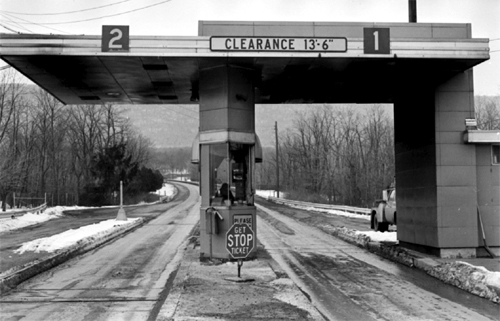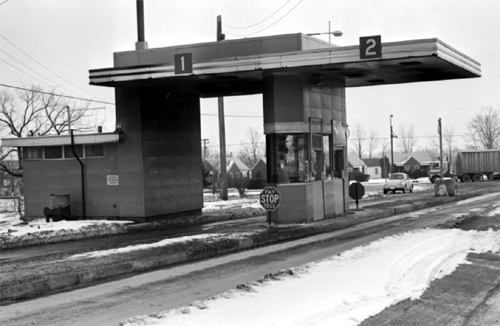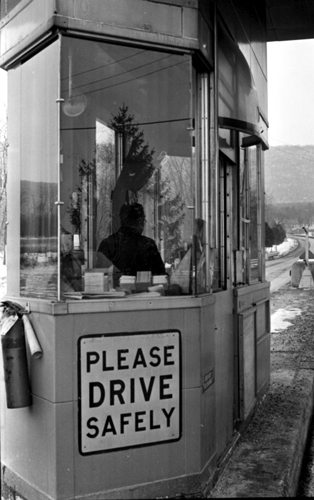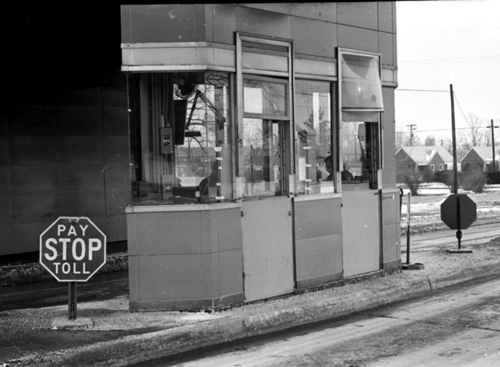Pittsburgh and Pennsylvania Highways
A collection of information and personal research
Blue Mountain Toll Booth
This article appeared in the Carlisle, Pa. Evening Sentinel in January, 1982. The photographs were taken on January 20, 1982. On September 13, 1983, this last original 1940 toll booth still in service was decommissioned, dismantled, and sent to the Smithsonian Institution. (Another, from Fort Littleton Interchange, has been moved to the Allegheny-Kiski Valley Historical Society grounds near Tarentum and is the only one that remains standing assembled, intact and open to the public.) (http://www.paturnpike.com/geninfo/fastfacts/chrono.aspx)
|
By Bruce Harper A piece of local and national history will be going to the Smithsonian Institution this spring when the Blue Mountain toll booth of the Pennsylvania Turnpike is taken out of service. The booth is one of the last remaining toll booths built over 40 years ago when the original turnpike opened between Carlisle and Irwin. It is now exit 15 on the present Turnpike, located just over the line in Franklin County near Newburg. Only a few of the original toll booths on the first 160 mile stretch of the Turnpike remain. Through modernization and relocations, the 10 original toll plaza have changed in structure and character. The toll booth at Blue Mountain is a one-man operation, with the classification and collection machines within easy reach. H. M. Eyer, one of five officer-collectors who works at the interchange, says about the only improvement to the booth has been to the heating system. A wooden duct was built to direct hot air from the overhead heater down to the floor. Eyer says before the duct was installed, "hot air blew on your head, keeping it hot, but your feet stayed cold." The toll booth was offered to the Smithsonian because of the significance and impact of the Turnpike on highway construction and travel. Many toll roads and the Interstate Highway system have been patterned after the Pennsylvania Turnpike, first conceived in the mid-1930s. At that time, the only way to get from Harrisburg to Pittsburgh was by way of U.S. 30 or U.S. 22. Both roads were two-lane highways that followed the path of least resistance across the mountains. Drivers encountered steep grades and sharp curves in the long trip. The Turnpike was designed as a four-lane highway with no grade crossings, no traffic lights and no stop signs, a design utilized on the Interstate Highway system. The curves and grades on the Turnpike were kept below 3 percent, a standard that has held true since it was built. Once the road opened to traffic on Oct. 1, 1940, plans were made in Pennsylvania to extend the Turnpike east and west and several other states made plans to build their own turnpikes. In addition to representing a pioneer method of building highways, the Blue Mountain toll booth also represents the financing of the turnpike. The original project was financed with funds from the Federal Reconstruction Finance Corporation and the federal Public Works Administration. Since that time, the Turnpike has been entirely supported by revenue generated from the collection of tolls. No state or federal money is involved in the Turnpike operation. The Blue Mountain toll booth will not be the only one preserved as a historic treasure. The Pennsylvania Historical and Museum Commission also has one of the original toll booths in storage for a future display. |
|



